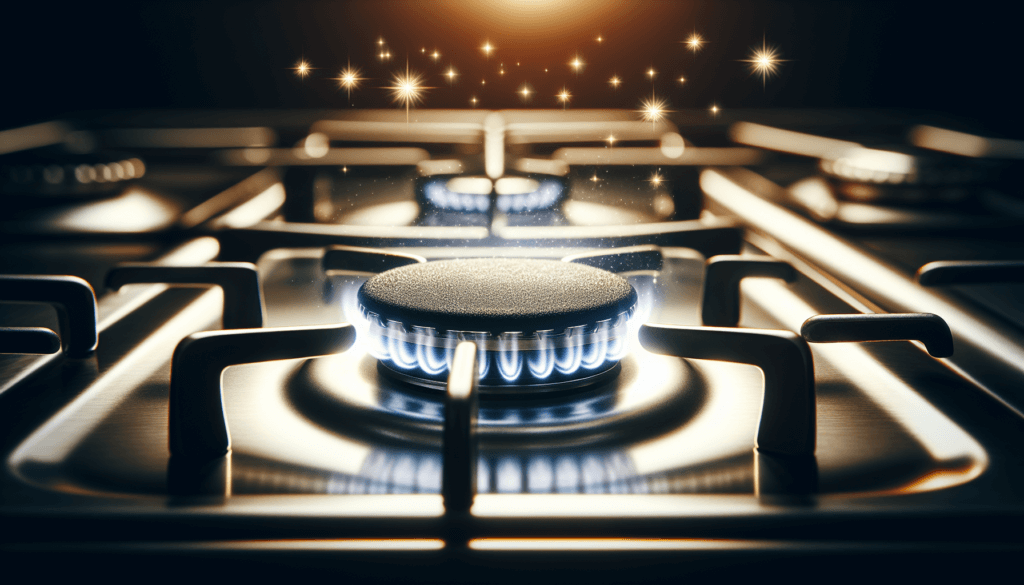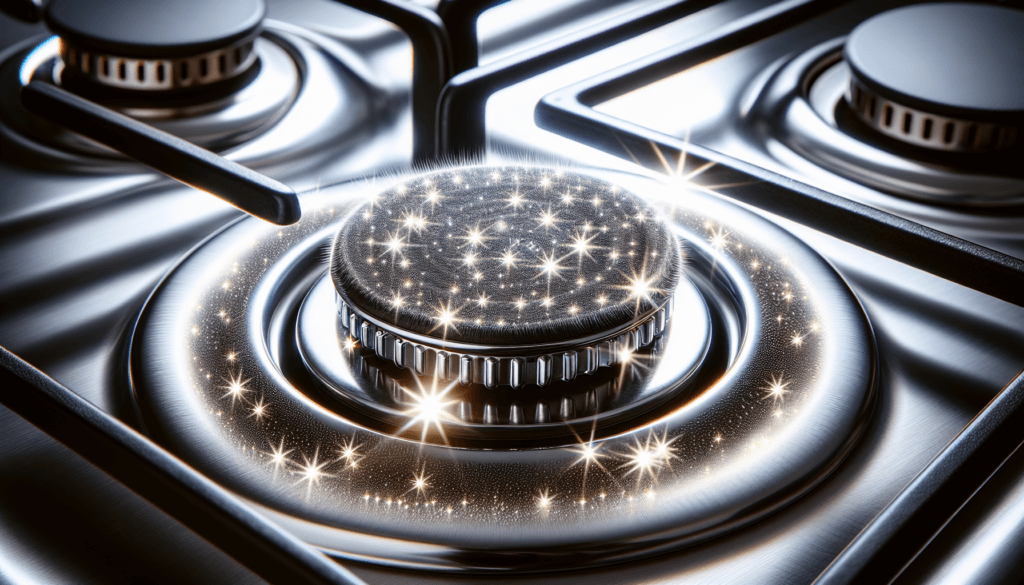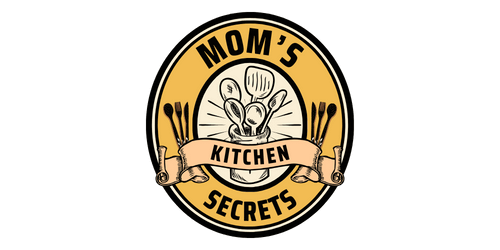You know that feeling when you finally finish cooking a delicious meal, only to be faced with the not-so-delightful task of cleaning up the greasy mess in your kitchen? Well, fret not! In this article, we will share with you the most popular kitchen hacks for tackling grease and making your cleaning process a breeze. From simple tricks using common household items to creative solutions you’ve never thought of before, these tips will revolutionize the way you clean up greasy messes in your kitchen. Say goodbye to scrubbing tirelessly and hello to a sparkling, grease-free kitchen in no time!

1. Hacks for Preventing Grease Buildup
1.1 Use a Splatter Screen While Cooking
One effective way to prevent grease buildup in your kitchen is by using a splatter screen while cooking. This simple tool acts as a barrier, preventing grease from splattering onto your stovetop, countertops, and other surfaces. By covering your pans and pots with a splatter screen, you can easily contain the grease and minimize the amount of cleanup required afterwards.
1.2 Line Baking Sheets and Pans with Aluminum Foil
Another useful hack to prevent grease buildup is to line your baking sheets and pans with aluminum foil. This method not only makes cleanup a breeze but also prevents the grease from sticking to the surface of your cookware. By simply removing the foil after cooking, you can discard the grease and enjoy a clean and grease-free pan.
1.3 Place a Layer of Salt on Spills
When spills occur in your kitchen, especially involving grease, a layer of salt can be a handy remedy. By immediately sprinkling salt over the spill, you can absorb a significant amount of the grease, making it easier to clean up afterwards. The salt acts as a natural absorbent, minimizing the greasy residue and preventing it from spreading to other surfaces.
1.4 Keep Surfaces Well-Ventilated
Proper ventilation is essential in preventing grease buildup in your kitchen. By ensuring that your kitchen is well-ventilated, you can reduce the accumulation of airborne grease particles on surfaces such as countertops, cabinets, and walls. Installing a range hood or opening windows can effectively remove the grease-laden air and maintain a cleaner kitchen environment.
1.5 Use a Vacuum Cleaner with Attachments
To prevent grease buildup in hard-to-reach areas such as crevices, corners, and kitchen appliances, using a vacuum cleaner with attachments can be highly beneficial. Attachments such as brush heads or crevice tools can easily remove grease and dirt from these areas, preventing the buildup of grime over time. Regularly vacuuming these areas can help keep your kitchen clean and free from grease residue.
2. Hacks for Cleaning Grease from Surfaces
2.1 Use Vinegar and Water Solution
When it comes to cleaning grease from surfaces, a vinegar and water solution is a go-to hack. Vinegar, with its acidic properties, is an excellent cleaner for cutting through grease. To create the solution, mix equal parts of vinegar and water in a spray bottle. Spray the solution onto the greasy surface and let it sit for a few minutes. Then, wipe it clean with a microfiber cloth or sponge.
2.2 Make a Paste with Baking Soda
Baking soda is another versatile cleaner that can effectively remove grease from surfaces. To make a paste, mix baking soda with water until it forms a thick consistency. Apply the paste to the greasy surface and use a sponge or cloth to scrub the area. The abrasive texture of baking soda helps to break down the grease, making it easier to remove.
2.3 Rub with Microfiber Cloths
Microfiber cloths are highly effective in cleaning grease from surfaces due to their absorbency and ability to capture dirt and grease particles. Simply dampen a microfiber cloth with warm water and use it to gently scrub away the grease. The microfiber material traps the grease, preventing it from spreading or smearing on the surface.
2.4 Use Multi-Purpose Cleaners
Using multi-purpose cleaners specifically designed to tackle grease can be a convenient and efficient way to clean greasy surfaces. These cleaners are formulated to cut through tough grease and grime, making it easier to remove. Follow the instructions on the cleaner’s packaging and use a cloth or sponge to wipe away the grease.
2.5 Try Dish Soap
Dish soap, a staple in many kitchens, can also be a useful hack for cleaning grease from surfaces. Its powerful degreasing properties make it effective in cutting through tough grease stains. Mix a few drops of dish soap with warm water, then use a sponge or cloth to apply the solution to the greasy surface. Gently scrub the area, focusing on the greasy spots, and rinse with clean water.

3. Hacks for Cleaning Grease from Kitchen Appliances
3.1 Oven Cleaning with Baking Soda and Vinegar
Cleaning grease from your oven can be a daunting task, but with the right hacks, it can become much easier. One popular method involves using a mixture of baking soda and vinegar. Start by sprinkling a generous amount of baking soda on the greasy areas inside the oven. Then, spray or sprinkle vinegar over the baking soda to create a foaming reaction. Let the mixture sit for a few hours or overnight, and then use a damp cloth or sponge to wipe away the loosened grease. Rinse thoroughly with water to remove any residue.
3.2 Clean Grease Filters in the Hood
Kitchen hoods or range hoods often accumulate a significant amount of grease over time. To clean the grease filters, remove them from the hood and detach any removable parts. Soak the filters in a sink or container filled with hot water and dish soap. Allow them to soak for about 15-20 minutes, then scrub the filters gently with a brush or sponge to remove the grease. Rinse thoroughly and let them air dry before reattaching.
3.3 Use Degreasers for Stovetops
Stovetops are prone to grease buildup, especially around burners and knobs. To effectively clean grease from stovetops, using a degreaser specifically designed for this purpose can be highly effective. Apply the degreaser to the greasy areas and let it sit for a few minutes to penetrate the grease. Then, use a cloth or sponge to wipe away the grease. Follow the manufacturer’s instructions for the specific degreaser being used.
3.4 Clean Grease Traps in Sink
Grease traps in sinks can become clogged and contribute to the buildup of grease in your kitchen. To clean the grease traps, start by removing any visible debris or grease from the surface. Pour boiling water down the drain to help loosen the grease, followed by a mixture of baking soda and vinegar. Let the mixture sit for a few minutes, then flush it out with hot water. Repeat as necessary to effectively clean the grease traps.
3.5 Cleaning Grease from Microwave
To clean the grease from your microwave, start by placing a microwave-safe bowl filled with water and a few tablespoons of lemon juice inside the microwave. Heat the mixture on high for a few minutes until it starts to boil. The steam created will loosen the grease, making it easier to remove. Carefully remove the bowl and wipe down the interior of the microwave with a microfiber cloth or sponge, focusing on greasy areas. Repeat if necessary until the grease is completely removed.
4. Hacks for Cleaning Grease from Cookware and Utensils
4.1 Soaking in Hot Soapy Water
One of the easiest and most effective hacks for cleaning grease from cookware and utensils is to soak them in hot soapy water. Fill your sink or a large container with hot water and add dish soap. Place the greasy cookware and utensils in the soapy water and let them soak for at least 30 minutes to loosen the grease. After soaking, scrub the items with a brush or sponge to remove the remaining grease. Rinse thoroughly with clean water.
4.2 Scrub with Baking Soda
For stubborn grease stains on cookware and utensils, baking soda can be used as an abrasive cleaner. Create a paste by mixing baking soda with water, then apply it to the greasy areas. Use a scrub brush or sponge to scrub the cookware or utensils, focusing on the areas with grease. The baking soda paste will help break down the grease and make it easier to remove. Rinse thoroughly after scrubbing.
4.3 Use Vinegar for Tough Grease
Vinegar’s acidic properties make it an effective cleaner for tough grease stains on cookware and utensils. Fill a sink or container with equal parts vinegar and water, then soak the greasy items in the mixture for a few hours or overnight. The vinegar will help loosen and dissolve the grease, making it easier to scrub off. After soaking, scrub the items with a brush or sponge and rinse with clean water.
4.4 Soak with Ammonia Solution
For extremely greasy cookware and utensils, soaking them in an ammonia solution can be an effective method. In a well-ventilated area, combine equal parts ammonia and water in a sink or container. Place the greasy items in the solution and let them soak for several hours, or overnight if necessary. The ammonia will help break down and dissolve the grease. After soaking, scrub the items and rinse thoroughly with water.
4.5 Try Lemon Juice
Lemon juice, with its natural acidity, can be an effective hack for removing grease stains from cookware and utensils. Squeeze fresh lemon juice onto the greasy areas and let it sit for a few minutes to penetrate the grease. Then, scrub the items with a brush or sponge to remove the grease. Rinse thoroughly with clean water. The fresh scent of lemon will also help eliminate any lingering grease odors.

5. Hacks for Cleaning Grease from Countertops and Cabinets
5.1 Use Dish Soap and Warm Water
Cleaning grease from countertops and cabinets can be achieved with a simple solution of dish soap and warm water. Fill a sink or a bucket with warm water and add a few drops of dish soap. Dip a sponge or cloth into the soapy solution and wring out any excess water. Gently scrub the greasy surfaces, paying extra attention to areas with stubborn grease. Rinse the sponge or cloth frequently and continue until the grease is removed. Finish by rinsing the surfaces with clean water.
5.2 Make a Paste with Salt and Lemon Juice
Salt and lemon juice can be combined to form a powerful paste for cleaning grease from countertops and cabinets. Mix equal parts salt and lemon juice to create a paste, then apply it to the greasy areas. Use a sponge or scrub brush to gently scrub the surfaces, focusing on the greasy spots. The abrasive nature of the salt will help break down the grease, while the lemon juice’s acidity aids in cutting through the grime. Rinse thoroughly with water.
5.3 Apply Baking Soda Paste
Baking soda, known for its versatility, can also be used to clean grease from countertops and cabinets. Create a paste by mixing baking soda with water until you achieve the desired consistency. Apply the paste to the greasy areas and use a sponge or cloth to gently scrub the surfaces. The baking soda’s abrasive texture will help remove the grease without scratching or damaging the surfaces. Rinse with water to remove any residue.
5.4 Clean with Vinegar and Water Solution
Similar to its effectiveness on surfaces, a vinegar and water solution can be used to clean grease from countertops and cabinets. Mix equal parts of vinegar and water in a spray bottle. Spray the solution onto the greasy areas and let it sit for a few minutes to penetrate the grease. Use a sponge or cloth to wipe away the grease, rinsing the sponge or cloth frequently. Finish by rinsing the surfaces with clean water.
5.5 Apply Commercial Degreasers
If the grease on your countertops and cabinets is particularly stubborn or extensive, using commercial degreasers can help. There are various degreasers available on the market, specifically designed to handle tough grease stains. Follow the instructions on the product’s packaging and apply the degreaser to the greasy areas. Use a sponge or cloth to wipe away the grease, ensuring to rinse the surfaces thoroughly afterwards.
6. Hacks for Cleaning Grease from Floors
6.1 Hot Water and Dish Soap Mixture
To clean grease from floors, a mixture of hot water and dish soap can be highly effective. Fill a bucket or sink with hot water and add a few drops of dish soap. Stir the mixture until it becomes soapy. Dip a mop or a cloth into the soapy water and wring out any excess liquid. Use the mop or cloth to scrub the greasy areas of your floor, paying extra attention to spots with heavy grease buildup. Rinse the mop or cloth frequently and continue until the grease is removed. Finish by rinsing the floor with clean water.
6.2 Use Vinegar and Hot Water Solution
For an alternative floor cleaning solution, vinegar mixed with hot water can be highly effective in removing grease. In a bucket or sink, combine equal parts vinegar and hot water. Dip a mop or a cloth into the solution and wring out any excess liquid. Gently scrub the greasy areas of your floor, letting the vinegar solution soak for a few minutes before scrubbing. Rinse the mop or cloth frequently, ensuring to remove any dirt or grease buildup. Finish by rinsing the floor with clean water.
6.3 Use a Steam Mop
A steam mop is a powerful tool for cleaning grease from floors, as the hot steam helps to loosen and dissolve the grease. Fill the steam mop’s reservoir with water and switch it on to begin generating steam. Move the steam mop over the greasy areas of your floor, allowing the steam to penetrate and loosen the grease. The attached microfiber pad will help absorb the loosened grease. Remember to follow the manufacturer’s instructions for the specific steam mop being used.
6.4 Apply Baking Soda Paste
Baking soda, with its abrasive properties, can be used as a paste to clean grease from floors. Create a paste by mixing baking soda with water until it becomes thick. Apply the paste to the greasy areas of your floor and use a scrub brush or cloth to gently scrub the surfaces. The baking soda’s abrasiveness will help break down the grease, making it easier to remove. Rinse the floor with clean water to remove any residue.
6.5 Try Commercial Floor Cleaners
If the grease on your floor is particularly stubborn or extensive, using commercial floor cleaners designed to remove grease can be highly effective. There are various floor cleaners available on the market specifically formulated to handle tough grease stains. Follow the instructions on the product’s packaging and apply the cleaner to the greasy areas of your floor. Use a mop or cloth to scrub the surfaces and rinse thoroughly with clean water.

7. Hacks for Cleaning Grease from Fabrics
7.1 Sprinkle Cornstarch on Fresh Grease Stains
When dealing with fresh grease stains on fabrics, one hack is to sprinkle cornstarch directly onto the stain. Gently rub the cornstarch into the fabric, allowing it to absorb the grease. Let it sit for about 15-20 minutes, then brush or shake off the excess cornstarch. The cornstarch will help absorb the grease, making it easier to remove the stain.
7.2 Apply Dish Soap on Stains
Dish soap can be an effective hack for cleaning grease stains from fabrics. Apply a small amount of dish soap directly onto the stain and gently rub it in with your fingers. Let it sit for a few minutes to allow the dish soap to penetrate the grease. Then, wash the fabric as usual, following the care instructions. This method often works best on fresh or light grease stains.
7.3 Pretreat with Laundry Detergent
Using laundry detergent as a pretreatment can also help remove grease stains from fabrics. Apply a small amount of laundry detergent directly onto the grease stain and rub it in gently. Let the detergent sit on the fabric for about 15-20 minutes, allowing it to penetrate the stain. Then, wash the fabric in the washing machine as usual, using the appropriate water temperature and laundry detergent for the fabric.
7.4 Use Rubbing Alcohol for Stubborn Stains
For stubborn grease stains on fabrics, rubbing alcohol can be an effective hack. Dampen a clean cloth or sponge with rubbing alcohol and gently dab it onto the stain. Be careful not to rub or scrub, as this can spread the stain. Continue dabbing until the grease begins to lift from the fabric. Then, wash the fabric as usual, following the care instructions.
7.5 Try a Grease-Fighting Laundry Detergent
Using a laundry detergent specifically formulated to fight grease stains can be an effective hack for cleaning grease from fabrics. Look for laundry detergents labeled as “grease-fighting” or “stain-removing.” Follow the instructions on the detergent’s packaging, and use it to wash the fabric in the washing machine. This method is particularly useful for heavily soiled or tough grease stains.
8. Hacks for Cleaning Grease from Dishware and Cutlery
8.1 Use Hot Water with Dish Soap
To clean grease from dishware and cutlery, a simple solution of hot water and dish soap can be highly effective. Fill your sink or a container with hot water and add a few drops of dish soap. Submerge the greasy items in the soapy water and let them soak for a few minutes to loosen the grease. After soaking, use a sponge or brush to scrub the items, paying extra attention to areas with heavy grease buildup. Rinse the items with clean water to remove any residue.
8.2 Scrub with Baking Soda Paste
Baking soda, known for its versatility, can also be used to clean grease from dishware and cutlery. Create a paste by mixing baking soda with water, then apply it to the greasy areas of your dishware and cutlery. Use a sponge or brush to gently scrub the items, focusing on the greasy spots. The baking soda’s abrasive texture will help break down the grease, making it easier to remove. Rinse thoroughly with water after scrubbing.
8.3 Soak in Vinegar and Water Solution
Vinegar, with its acidic properties, can be used to effectively remove grease from dishware and cutlery. Create a solution by mixing equal parts vinegar and water in a container or sink. Place the greasy items in the solution and let them soak for a few minutes to loosen the grease. After soaking, scrub the items with a sponge or brush to remove the remaining grease. Rinse thoroughly with clean water.
8.4 Apply Lemon Juice
Lemon juice, with its natural acidity, can be a handy hack for removing grease from dishware and cutlery. Squeeze fresh lemon juice over the greasy areas and let it sit for a few minutes to penetrate the grease. Then, use a sponge or brush to scrub the items, paying extra attention to the greasy spots. Rinse the items with clean water to remove any residue and enjoy the fresh scent of lemon.
8.5 Try a Commercial Dishware Cleaner
If the grease on your dishware and cutlery is particularly stubborn or extensive, using a commercial dishware cleaner can be highly effective. These cleaners are specifically formulated to remove tough grease and grime. Follow the instructions on the product’s packaging and apply the cleaner to the greasy areas of your dishware and cutlery. Use a sponge or brush to scrub the items, ensuring to rinse thoroughly with clean water afterwards.

9. Hacks for Cleaning Grease from Small Appliances
9.1 Use Dish Soap and Warm Water
To clean grease from small appliances, a mixture of dish soap and warm water can be highly effective. Fill a sink or a container with warm water and add a few drops of dish soap. Submerge the greasy parts of the small appliances in the soapy water and let them soak for a few minutes. Use a sponge or brush to scrub the greasy areas, focusing on spots with heavy grease buildup. Rinse the parts thoroughly with clean water after scrubbing.
9.2 Make a Baking Soda Paste
Baking soda, with its abrasive properties, can be used as a paste to clean grease from small appliances. Create a paste by mixing baking soda with water until you achieve a thick consistency. Apply the paste to the greasy areas of the small appliances and use a sponge or brush to gently scrub. The baking soda’s abrasive texture will help break down the grease, making it easier to remove. Rinse the parts with clean water to remove any residue.
9.3 Wipe with Vinegar and Water Solution
Vinegar, with its acidic properties, can be an effective hack for cleaning grease from small appliances. Create a solution by mixing equal parts vinegar and water in a container or sink. Dip a sponge or cloth into the solution and wring out any excess liquid. Wipe the greasy areas of the small appliances with the vinegar solution. The vinegar will help dissolve the grease, making it easier to clean. Rinse the parts with clean water or wipe them with a damp cloth after cleaning.
9.4 Clean Removable Parts Separately
Many small appliances have removable parts that can be cleaned separately. If possible, remove any detachable parts from the small appliances and clean them individually. Soak the parts in a sink or container filled with warm water and dish soap, using a brush or sponge to scrub away the grease. Rinse the parts thoroughly with clean water before reattaching them to the small appliances.
9.5 Try a Degreasing Spray
For small appliances with stubborn grease buildup, using a degreasing spray specifically designed for kitchen appliances can be highly effective. Follow the instructions on the spray’s packaging and apply it to the greasy areas of the small appliances. Let the spray sit for a few minutes to penetrate the grease, then use a sponge or brush to scrub the greasy spots. Rinse thoroughly with clean water after scrubbing.
10. Hacks for Removing Lingering Grease Odor
10.1 Boil Vinegar and Water
Boiling a mixture of vinegar and water can effectively remove lingering grease odors in your kitchen. In a saucepan, combine equal parts vinegar and water and bring the mixture to a boil. Allow it to simmer for a few minutes, allowing the steam to disperse throughout the kitchen. The vinegar’s acidic properties will help neutralize the grease odors, leaving your kitchen smelling fresh and clean.
10.2 Place Bowls of Baking Soda
Baking soda is known for its ability to absorb odors, making it a useful hack for removing lingering grease odors. Place bowls of baking soda in various areas of your kitchen, focusing on areas with heavy grease buildup or persistent odors. The baking soda will gradually absorb the odors over time, leaving your kitchen smelling fresh. Replace the baking soda every few weeks or as needed.
10.3 Try Coffee Grounds
Coffee grounds can be surprisingly effective in neutralizing lingering grease odors. Fill a bowl with fresh coffee grounds and place it in your kitchen, preferably near the source of the odor. The coffee grounds will help absorb the grease odors, leaving a pleasant coffee aroma in its place. Replace the coffee grounds every few days for continued effectiveness.
10.4 Use Odor-Absorbing Charcoal
Odor-absorbing charcoal, commonly available in the form of porous sachets or bags, can be an excellent hack for eliminating lingering grease odors. Place the charcoal sachets or bags in areas of your kitchen with persistent odors, such as near the stove or oven. The charcoal will naturally absorb the odors, leaving your kitchen smelling fresh and neutral.
10.5 Air Out the Kitchen Regularly
One simple yet effective hack for removing lingering grease odor is to regularly air out your kitchen. Open windows or doors to allow fresh air to circulate and replace the stale, greasy air. Proper ventilation can help dissipate the odor particles and freshen up your kitchen. Consider using fans or exhaust systems to enhance air circulation and minimize the buildup of lingering grease odors.
Cleaning up grease in the kitchen can be a challenging task, but with these popular hacks, you can make the process much easier. By preventing grease buildup, using effective cleaning methods, and employing specific hacks for different surfaces and items, you can maintain a clean and grease-free kitchen environment. With a little effort and the right techniques, you’ll be able to keep your kitchen sparkling clean and free of grease.


